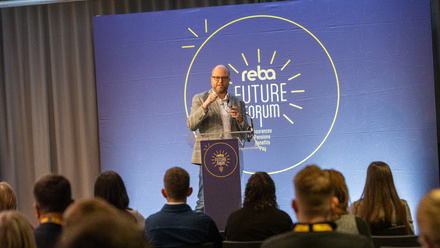REBA inside track: Improved data insights are essential to transformation project success
REBA’s annual Benefits Design Research, developed in partnership with Howden Employee Benefits, builds on the themes of the 2023 and 2024 reports. These were: evolving employee value proposition, transformation projects and barriers to major change.
This 2025 research now digs deeper into the data being used by today’s employee benefits professionals to find out which metrics are most compelling and highly valued (as well as where the key gaps are) when evidencing programme performance or seeking approval for change or innovation.
Despite being seemingly awash with sources of data – from HR and benefits platforms through to providers and consultants – there are still significant gaps in the analysed data insights that employers really need.
Not all data for all benefits is created equal though, and nor does it need to be.
Employer priorities differ, making a deep dive in certain types of data for some benefits less important than for others.
For instance, lower-investment benefits, such as mental wellbeing offerings, are linked to a lower use of any type of analytics and are mostly likely to be signed off within the human resources or benefits team.
Pensions currently take precedence
Conversely, pensions – the most expensive benefit – is most likely to go up to board level for any change approvals, and to rely most heavily on benchmarking data. It is also the benefit least likely to have been declined owing to lack of data – no doubt as a result of the senior-level scrutiny.
That said, beyond pensions benchmarking metrics, fewer than half of employers look into more complex evidential data linked to outcomes, such retirement living standards, despite declaring that this information would be important if they could get it.
In the Benefits Design Research 2024, more than two-thirds (69%) of respondents said that employee health and wellbeing would affect their strategies across 2024 and 2025. This, coupled with the pricing turbulence and medical trend affecting health benefits over the past two years, has caused a major concentration of change.
In the 2025 research, results show that nearly three-quarters (73%) of all benefits change since 2023 has related to health and protection benefits or mental or physical wellbeing.
This may explain why there is more sophisticated analysis of data across employer-funded health benefits, such as private medical insurance, than other benefits areas.
Employers have had to push harder to examine claims spend and member data. With future poorer health predicted across the population (including those of working age), the pressure is on to model future people risk to justify health and prevention spend now in order to mitigate higher costs to businesses in years to come.
As many as one-third of the 2025 survey respondents found out (undoubtedly to their own dismay) that not having metrics meant that they did not get change projects approved as planned.
This is an expensive oversight in terms of time and resources, as well as actual money.
As reward and benefits continue to be used more strategically within businesses, so, too, must the data insights that are provided.






